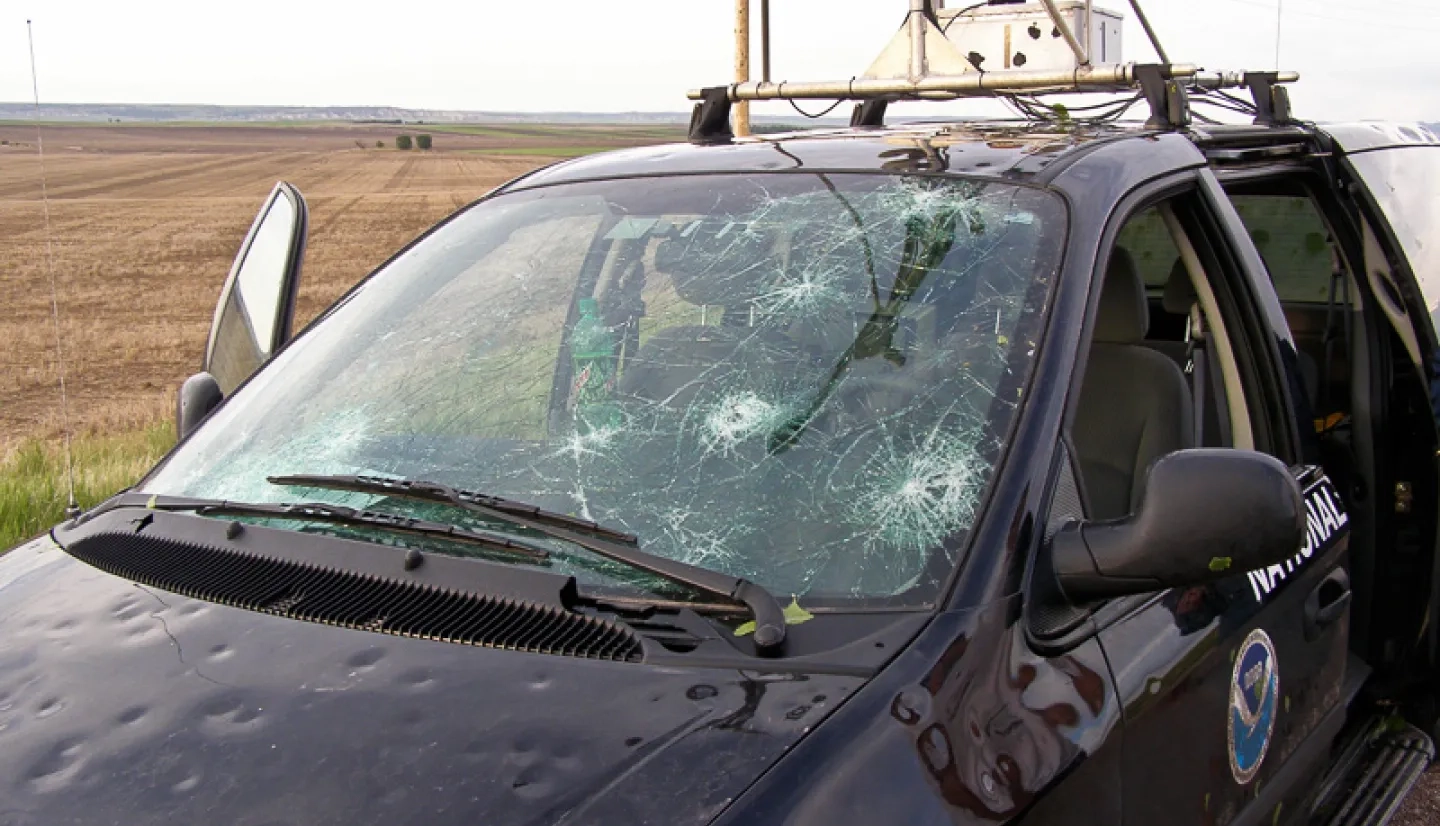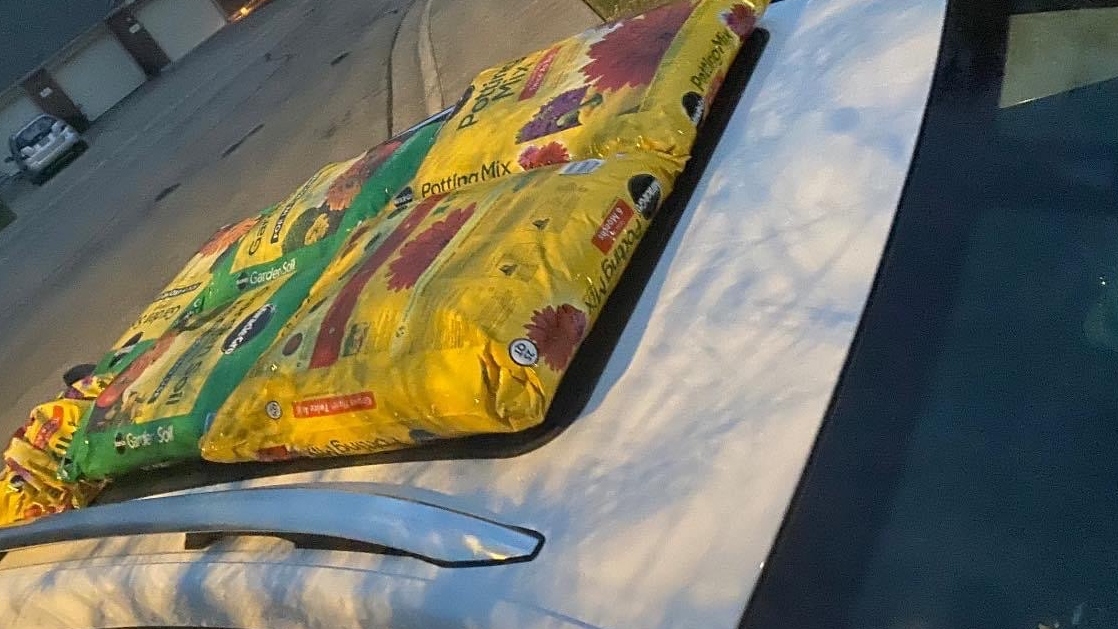Hail as small as 1 inch in diameter can cause damage to a car. Hail can be a destructive force, causing significant damage to vehicles.
Even hail as small as 1 inch in diameter can dent or crack windshields, damage paint, and dent the body of a car. Larger hail, such as golf ball-sized or even softball-sized hail, can cause even more extensive damage, shattering windows and causing severe body damage.
The impact of hailstones hitting a car at high velocity can create dents and dings all over the vehicle. In extreme cases, hail can even total a car, rendering it irreparable. As a result, it is important to seek shelter during severe hailstorms to prevent costly damage to your vehicle.
Understanding Hail Damage
Hailstorms can be a terrifying experience, especially when you see the size of the hailstones plummeting from the sky. While your safety is of utmost importance during a hailstorm, it’s also crucial to consider the potential damage that can occur to your vehicle. In this article, we will delve deeper into the concept of hail damage and its effects on cars.
What Causes Hail Damage
Understanding the causes of hail damage can help you appreciate the intensity of its impact on your vehicle. Hailstones are formed when powerful updrafts in thunderstorms carry raindrops upward into extremely cold areas of the cloud, where they freeze into ice. As these ice pellets get caught in the updrafts, they can collide with supercooled water droplets, gradually layering and growing larger. Once they become too heavy for the updrafts to support, hailstones fall from the sky, causing potential damage upon impact.
Hailstones come in various sizes, ranging from as small as peas to as large as softballs. When hailstones larger than a quarter inch (6.35mm) fall from the sky, they can pose a threat to your vehicle’s exterior. While even small hailstones can cause minor dents and scratches, larger ones can potentially lead to more significant damage.
How Hail Damage Affects Cars
Hailstones, especially those of considerable size, can ravage your car’s exterior, leaving behind unsightly dents, scratches, and even shattered windows. The severity of the damage depends on various factors, including the size of the hailstones, the speed at which they fall, and the angle of impact.
| Hail Size | Damage Level |
|---|---|
| Small (pea-sized) | Minor dents and scratches |
| Golf ball-sized | Dents, broken windows, and damaged paint |
| Softball-sized | Severe dents, shattered windows, and extensive body damage |
When hailstones strike your car, it is important to have them inspected and repaired promptly. Ignoring hail damage can lead to long-term issues such as rusting, corrosion, and diminished vehicle value. To mitigate these effects, it is advisable to seek professional assistance from a reputable auto body repair shop. These experts can assess the extent of the damage and restore your vehicle to its pre-hailstorm condition.
Remember, hailstorms can be unpredictable, and even the smallest hailstones can cause damage. Being proactive and taking immediate action after a storm can save you time, money, and future headaches. So, always be prepared to address hail damage and protect your precious vehicle.

Credit: www.kxan.com
Factors That Determine Hail Damage Severity
When hailstorms hit, they can unleash a force of destruction that leaves vehicles battered and bruised. The severity of hail damage often depends on various factors. Understanding these factors can give you insights into the potential risks and help you prepare for the worst. Here are three key factors that determine hail damage severity:
Size And Weight Of Hailstones
The size and weight of hailstones play a crucial role in determining the extent of damage inflicted upon a vehicle. Larger hailstones tend to cause more severe damage as they possess greater mass and force upon impact. Generally, hailstones larger than 1 inch in diameter have the potential to dent metal surfaces, crack windshields, and cause significant damage to other parts of the vehicle. Moreover, heavier hailstones can cause structural damage, compromising the integrity of the car’s body.
Velocity And Angle Of Hailstones Impact
The velocity and angle at which hailstones strike a vehicle further contribute to the severity of the damage caused. Hailstones propelled at high speeds can create a greater impact force. The angle at which they hit the car can also affect the intensity of the damage. For instance, if hailstones strike the car horizontally or at a perpendicular angle, the force of impact is concentrated on a smaller area, leading to potentially greater damage. Understanding the velocity and angle of hailstones can help you estimate the potential extent of damage to your vehicle.
Vehicle Structure And Safety Features
The structure and safety features of a vehicle are vital in determining its susceptibility to hail damage. Vehicles with stronger body structures, such as those made with high-strength steel or aluminum panels, are generally more resilient to hail impacts. Additionally, safety features like reinforced glass and impact-absorbing materials can help minimize the damage inflicted during a hailstorm. The presence of these features can significantly affect the severity of hail damage, as they provide an extra layer of protection to the vehicle’s exterior surfaces and occupants.
Considering these factors can help gauge the potential severity of hail damage to your vehicle. It’s important to note that hailstorms can be unpredictable, and even small-sized hailstones can cause significant damage under certain conditions. Taking necessary precautions, such as parking your car in a covered area or using a car cover during a hailstorm, can help minimize the risk of damage to your vehicle.
Protecting Your Car From Hail Damage
Hailstorms can be a nightmare for car owners. The impact of hailstones can cause unsightly dents and scratches on your vehicle’s exterior, which not only diminishes its aesthetic appeal but also reduces its resale value. Fortunately, there are several measures you can take to protect your car from hail damage. In this article, we will explore the most effective strategies for safeguarding your vehicle during a hailstorm.
Parking Under Cover
Parking your car under cover is one of the simplest and most effective ways to shield it from hail damage. If you have a garage or carport, make sure to utilize it during hailstorms. Additionally, consider nearby structures such as buildings with covered parking lots or public parking garages. By making use of these covered spaces, you can significantly reduce the risk of your car getting pelted by hailstones.
Using Car Covers And Tarps
Car covers and tarps can provide an added layer of protection against hail damage. When selecting a car cover, opt for one that is specifically designed for hail protection. These covers are typically made of durable materials and are equipped with extra padding to absorb the impact of hailstones. Before using a car cover or tarp, ensure that your vehicle is clean and dry to prevent dirt or moisture from causing any potential scratches.
Alternative Protection Strategies
If parking under cover or using car covers and tarps is not feasible, there are alternative protection strategies you can employ. One option is to utilize hail nets or hail blankets, which are designed to cushion the impact of hailstones. These nets can be securely fastened over your vehicle to form a protective barrier.
Another approach is to create a makeshift hail protector using thick blankets or foam pads. Carefully cover your car with these materials, ensuring they are secured tightly to prevent them from blowing away during strong winds. While this method may not offer the same level of protection as a purpose-built cover, it can still provide some defense against hail damage.
Lastly, consider seeking shelter under bridges or in covered parking lots when caught in a hailstorm. While these options may not always be available or convenient, they can provide a temporary solution to shield your car from hailstones.
Remember, the best time to protect your car from hail damage is before a storm hits. Stay aware of weather forecasts and take proactive steps to safeguard your vehicle. By implementing these strategies, you can minimize the risk of costly hail-related repairs and maintain the pristine condition of your car.

Credit: carcover-us.com

Credit: appliedsciences.nasa.gov
Conclusion
To conclude, the size of hail can indeed cause damage to your car. The larger the hailstones, the higher the chances of dents, cracks, and broken windows. It is crucial to be aware of weather conditions and seek shelter during severe hailstorms.
Regular maintenance and insurance coverage can help mitigate the financial impact of hail damage. Remember to stay safe and keep your vehicle protected.

